FRArt Algoliterary Publishing
- is created by Anaïs Berck
- is created by An Mertens
- is created by Gijs de Heij
- is created by Loren Britton
- is created by Guillaume Slizewicz
- is created by Tree Sort Algorithm
1. Preamble
- type: Article
- ref: DOC.2023.13
-
description:
An Mertens conducted a series of interviews before starting the residency.

- Sheet herbarium - with Ann Bogaerts
- 20220303_150604_herbarium_kl.jpg
- image/jpeg
- 16,01 KB
- download

- Object herbarium - with Ann Bogaerts
- 20220315_113035_herbarium2_kl.jpg
- image/jpeg
- 17,65 KB
- download
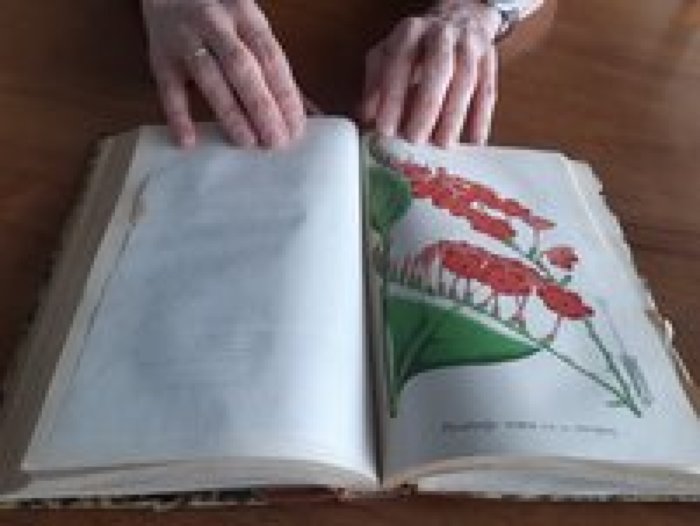
- Paper archive - with Denis Diagre
- 20220315_142611_archief1_kl.jpg
- image/jpeg
- 12,2 KB
- download
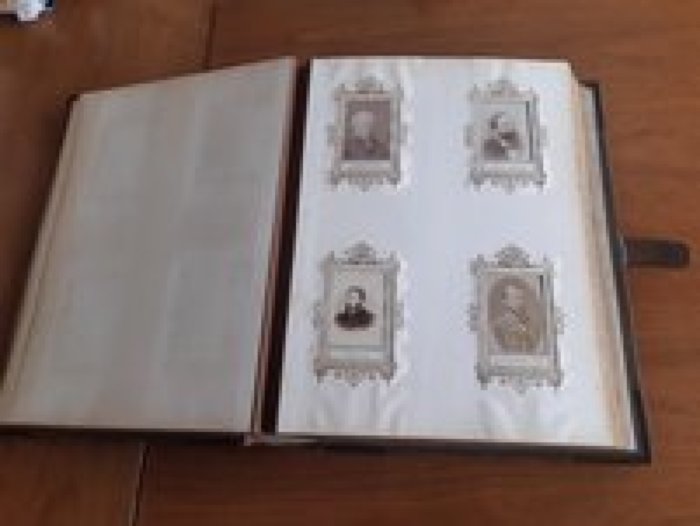
- Famous botanists - Paper archive - with Denis Diagre
- 20220315_143740_archief2_kl.jpg
- image/jpeg
- 9,82 KB
- download
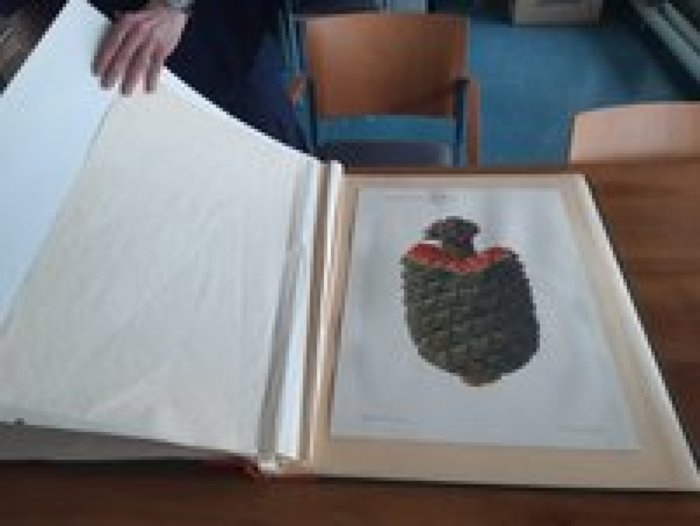
- Paper archive - with Denis Diagre
- 20220315_151341_archief3_kl.jpg
- image/jpeg
- 10,68 KB
- download
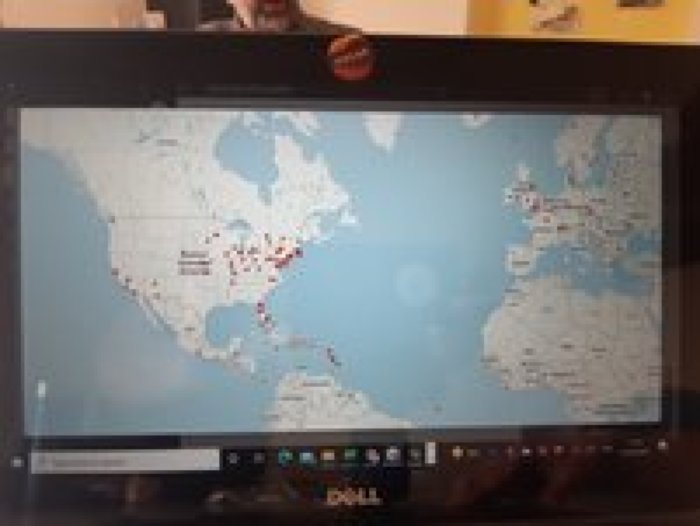
- Location of institutes sending out botanists during the colonies Quentin Groom – computer scientist biodiversity
- 20220316_111931_data_management_kl.jpg
- image/jpeg
- 10,86 KB
- download
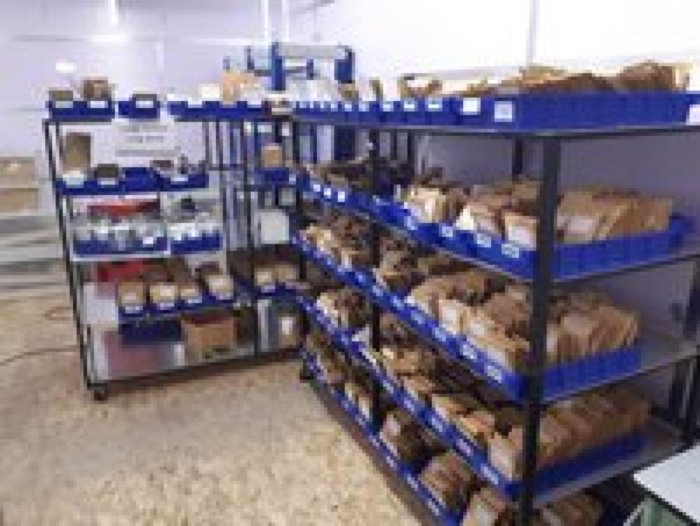
- Seedbank - with Filip Vandelook
- 20220316_114745_seedbank_kl.jpg
- image/jpeg
- 17,7 KB
- download

- Sleeping seeds - Seedbank - with Filip Vandelook
- 20220316_114832_seedbank2_kl.jpg
- image/jpeg
- 8,97 KB
- download
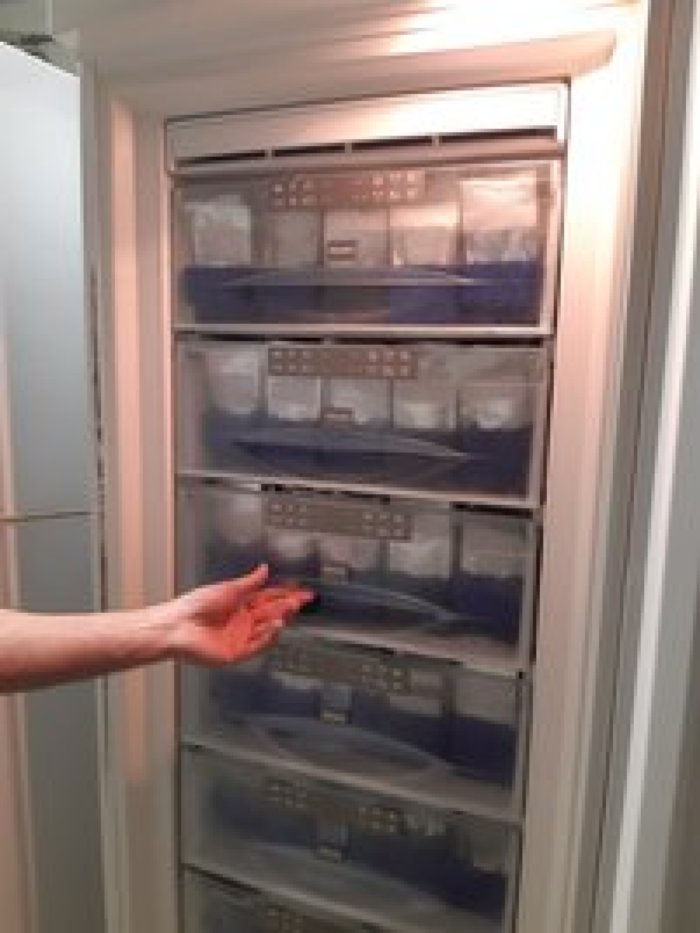
- Seedbank - with Filip Vandelook
- 20220316_115115_seedbank3_kl.jpg
- image/jpeg
- 16,11 KB
- download

- Seedbank - with Filip Vandelook
- 20220316_115129_seedbank4_kl.jpg
- image/jpeg
- 12,65 KB
- download
This residency was prepared with visits and interviews with the following people working for the Botanical Garden of Meise:
- Ann Bogaerts – Head Herbarium
- Koen Es - Head Education Department
- Henry Engledow – Databasemanager
- Sofie De Smedt - projectleader digitalisation herbarium
- Wim Tavernier - technician with expertise in wood collection
- Denis Diagre – manager archives
- Sofie Meeus – datasteward & citizen science
- Quentin Groom – computer scientist biodiversity
- Filip Vandelook - head seedbank
These interviews were confidential. Accounts can be found in the different contents that influenced this residency.
2. Meeting trees
- type: Article
- ref: DOC.2023.14
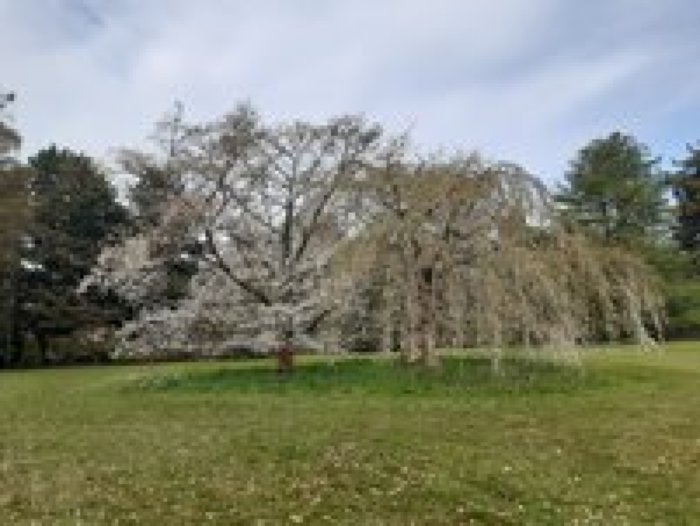
- Cherry trees from far
- 20220330_101426_cherries_kl.jpg
- image/jpeg
- 14,07 KB
- download

- Cherry tree close-up
- 20220330_101521_cherries2_kl.jpg
- image/jpeg
- 18,41 KB
- download
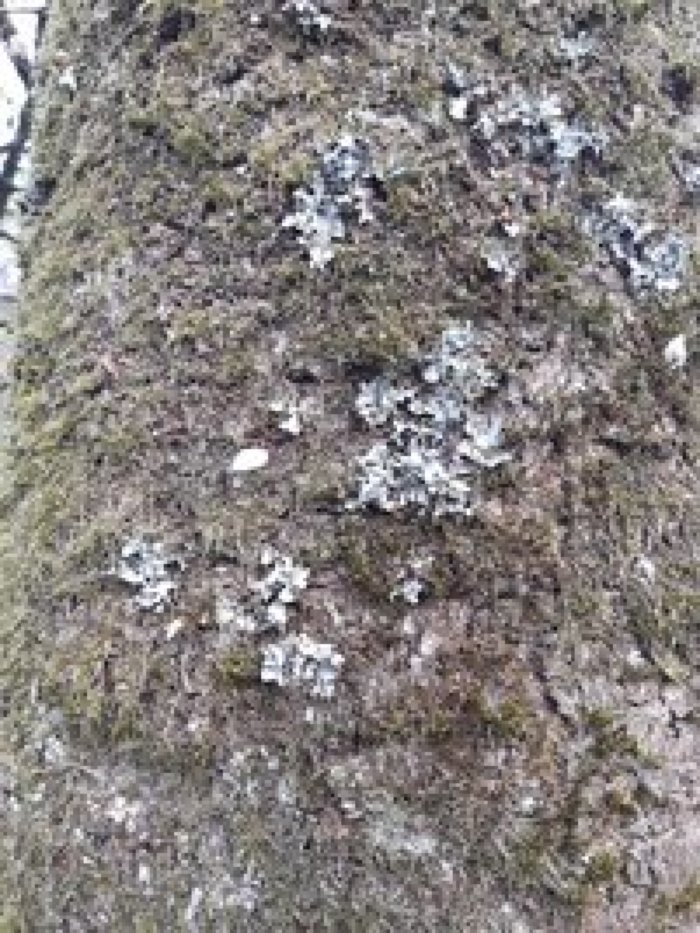
- Lichen & moss on cherry tree
- 20220330_101807_cherries3_kl.jpg
- image/jpeg
- 34,1 KB
- download

- Wood at foot of tree
- IMG_3021_wood_kl.jpg
- image/jpeg
- 22,84 KB
- download
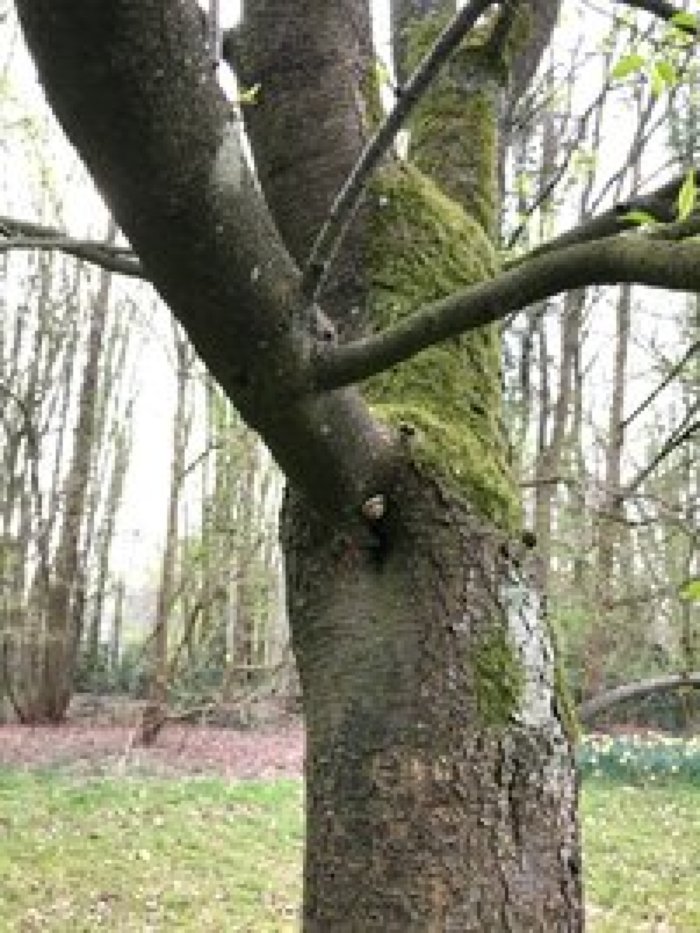
- Trunk of tree, branches starting at 1,30m
- IMG_3022_trunk_kl.jpg
- image/jpeg
- 30,56 KB
- download

- Mosses covering part of trunk
- IMG_3036_moss_kl.jpg
- image/jpeg
- 32,29 KB
- download
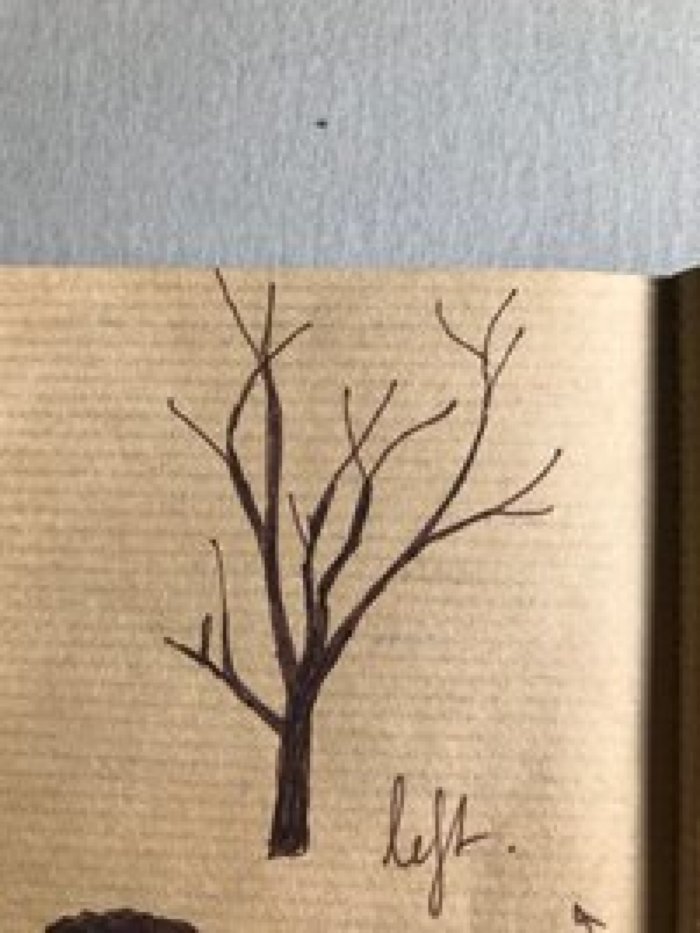
- Drawing tree from front
- IMG_3045_drawing1_kl.jpg
- image/jpeg
- 19,36 KB
- download

- Drawing tree from South
- IMG_3053_drawing2_kl.jpg
- image/jpeg
- 18,79 KB
- download

- Drawing leaves of tree
- IMG_3050_drawing3_kl.jpg
- image/jpeg
- 21,74 KB
- download
Every morning we walked out in the garden with the aim to ‘meet’ trees in who they are, how they look like, what they do, how they feel, how they smell, what their stories are, where they come from, what their concerns are, how they connect to others, their network, connecting to protective and healing values like those that existed in Celtic times. We engaged with this ecosystem the following methodologies: slowing down, observing, meditating, reiki, artistic expression (photo, drawing, text, poem, etc.), research & reading, engaging through senses other than sight and counting. The outcomes of these sessions were shared collectively.
- I went back to same group of trees, the birch has the thickest stem, I guess it is 40 à 60 ys old, maybe it is the oldest of the group? The other tree in front of it measures 2,5m. Its main branch is broken off, there is also a point where it touches the birch; it feels like a break, but not sure what happened there. All the branches are growing on one side, tree is a bit bending. Maybe the majority of the weight is on one side of the tree. A lot of the branches tend to grow downwards. It is developing its leaves, and has a lot of buds. Slowly some leaves are coming out. It is a nice moment, because you can see them in different stages.
I came from far and was going closer. I tried to draw the tree, it is very difficult. At one point you need to stop to go into details.
I made a schematics of where it stands, at border of the forest. There is a small field of tulips next to it. Behind it there is a field of wild growing bramble. It seems to be quite young. Less than thirty years old, but no idea to be honest. All the branches start at 1,30m from the soil. All the branches grow in one direction. It guess it has the shadow of the forest on it, it only grows where shadow is less present. You're invited to the trunk, you can walk to it without hurting your head. The bark at one side is softer, I don't know why. On the south side, you see a lot of broken branches and branches with no leaves: for lack of sun, competition with other trees. Other trees give nutrients, there are fallen leaves on the floor, from the oaks,the big guys.
The birds were very vocal yesterday. Less today. The tits were preparing their nests, they flew with big cotton balls in their mouth, resting on the cherry tree. You can also hear the road, the planes. Yesterday I heard the saw of the gardener.
There is circle around the tree: are they fungi that make it greener? Or harder to cut by the gardener?
There are branches at the foot of the tree, put by a human. It is a bit weird.
Its leaves are soft, uniform, and have pointy shapes.
Yesterday we saw 3 deers and people trying to follow them (young pupils from a nearby school).
Its branches are green/grey/white, it is difficult to tell what are the lichen, the moss, the fungi.
I made drawings of leaves and buds. The fruits don't smell. Breathing on the bark enhances the smell.
Today there was spider on the tree. Yesterday there was a snail behind one of the branches. I didn't know that snails went up on trees (fleeing from the mower?).
The branches start at 1,30m: maybe because you need space for the tractor to pass?
I made drawings of different types of bark and of the soft side of the tree with the branches.
Today it was cold, I felt discomfort, it was harder to connect.
I went to the three cherry trees. At first I greeted them. I asked whether I could take pictures.
I started from afar to capture the differences of color, the combination of moss and lychen. Lychen are indicators of climate health.
They look healthy but you never know,
I sat down. I wished them the best. I tried to connect with the roots in order to ask a question.
It's a method I learned from a Phillipino women.
I asked whether the research into the naming codex was the right way.
I put my left hand on tree. The first sensation or thought you get, is the answer of the tree. I felt warmth.
I interpret it as a positive answer. I stayed a bit to thank them.
3. Meeting humans
- type: Article
- ref: DOC.2023.15

- Entrance Woodlab - with Wim Tavernier
- anais_berck_woodlab-4_kl.jpg
- image/jpeg
- 24,8 KB
- download
We tried to meet the people around the garden: in who they are, how they are feeling working there, what they do, what their concerns are, how they connect to others, their network and the values they bring to their work. As a way of meeting the people we organised the following guided tours:
- Ann Bogaerts guided us through the harbarium of 4 million specimens
- Wim Tavernier guided us through the woodlab
- Marc Reynders, scientific manager of the living collections, guided us through the different greenhouses
The visits were very generous. They also showed differences between the team members in how to relate to its ingredients, impressions, experiences. On Tuesday 22 March, after the visit to the woodlab, disagreements emerged about the place we were in and the direction we wanted to take with the project. The botanical garden, which is a white scientific institute built on the colonial history of Belgium, has not taken any actions to confront and deal with this colonial legacy. The place sharpened our perspectives on the decolonial ingredient of this research. It also made clear the different visions and understandings of the place of the decolonial ingredient in the project between the members of the team. As a result of these difference, artist Loren Britton decided to leave the project on Thursday 24 March 22.
he following days were spent analysing this departure as well as reorganising to mitigate it. As a result of the departure of Loren Britton, a proposal was to slow down the research and to organise the 3rd and last residency after the Summer. This would give us time to engage more with the decolonial ingredient by reading, practising and sharing insights.
4. Visit to the Glasshouse
- type: Article
- ref: DOC.2023.16
- Creation date: 28 Mars 2022
-
description:
Visit 28 March 22 with Mark Reynders, scientific manager of the greenhouses

- Dracena - in danger of extinction
- anais_berck_glasshouse-2_dracena_extinction_kl.jpg
- image/jpeg
- 30,43 KB
- download

- San Severia - Belgian's plant
- anais_berck_glasshouse-6_san_severia_kl.jpg
- image/jpeg
- 37,3 KB
- download
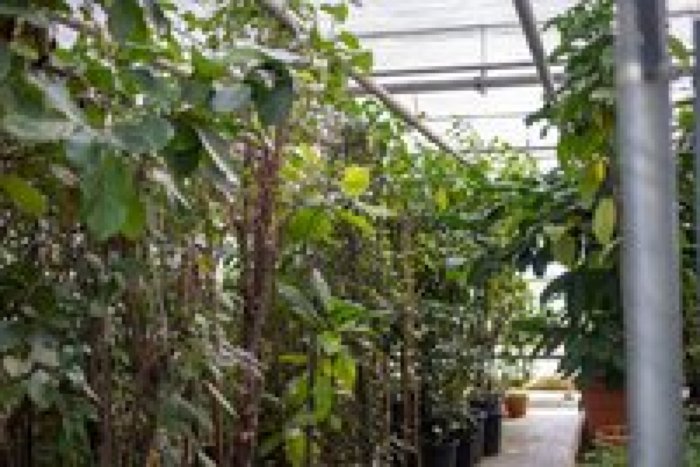
- Cultivation of different species of the same genus
- anais_berck_glasshouse-15_cultivation_species_kl.jpg
- image/jpeg
- 27,71 KB
- download
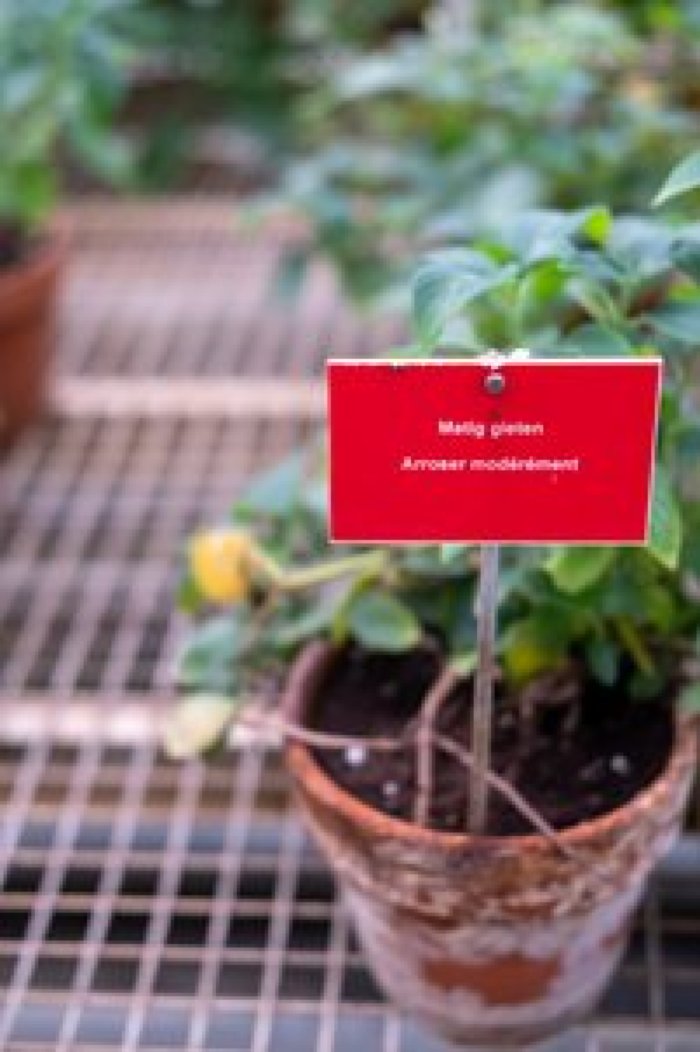
- Water with moderation
- anais_berck_glasshouse-18_matig_gieten_kl.jpg
- image/jpeg
- 30,03 KB
- download
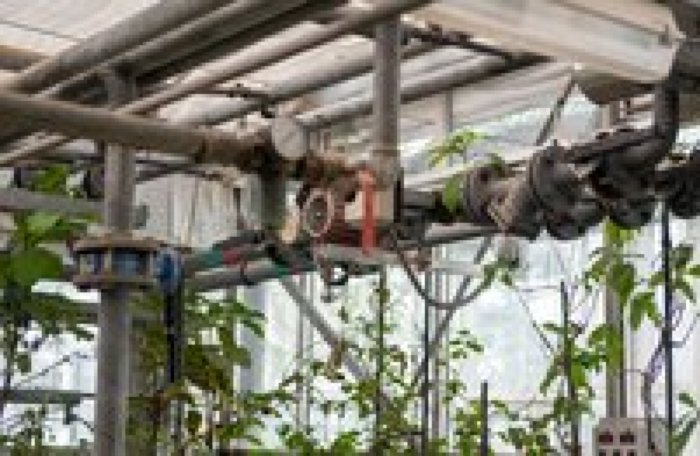
- Irrigation system
- anais_berck_glasshouse-19_irrigation_system_kl.jpg
- image/jpeg
- 28,03 KB
- download
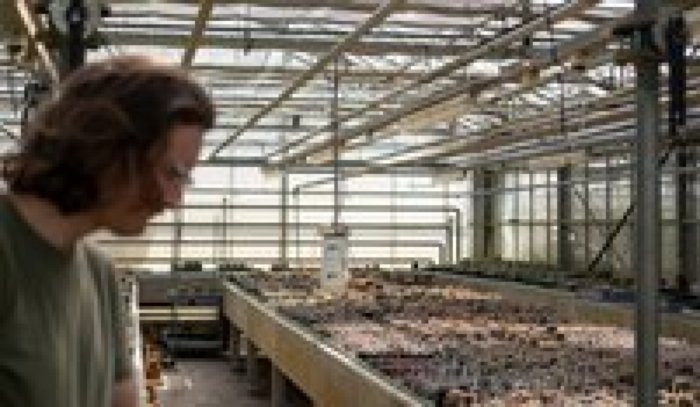
- Donated cactus collection
- anais_berck_glasshouse-21_donated_cactus_collection_kl.jpg
- image/jpeg
- 25,07 KB
- download
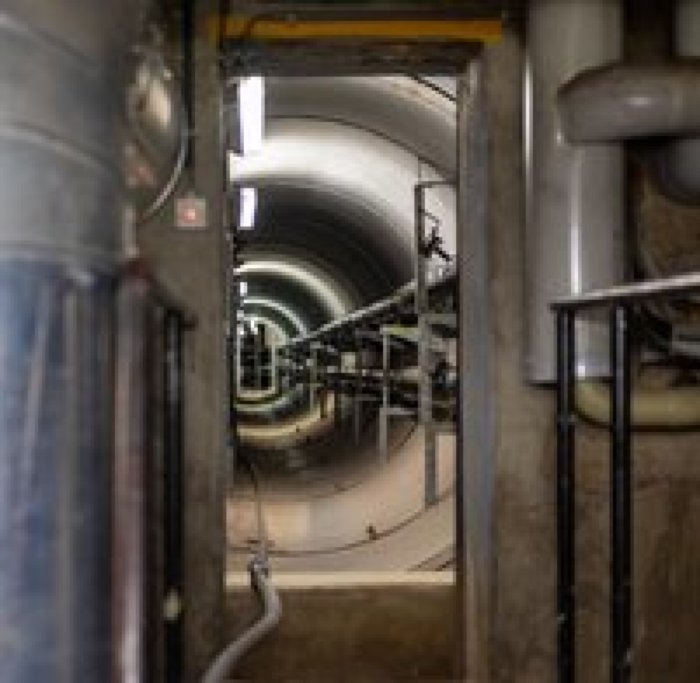
- Heathing system serving the different glasshouses
- anais_berck_glasshouse-24_heating_system_kl.jpg
- image/jpeg
- 25,72 KB
- download

- Fuccshia collection
- anais_berck_glasshouse-25_fuchsia_collection_kl.jpg
- image/jpeg
- 29,67 KB
- download

- Monitored research
- anais_berck_glasshouse-27_research_kl.jpg
- image/jpeg
- 28,28 KB
- download
The greenhouses
Marc works with 1 technician, who checks for diseases, 1 person in charge of the inventory and a team of 15 gardeners. His job is to give advice on species, organise exchanges, supervise projects and help maintain the seed bank. His main task is species verification, but he hardly gets around to it.
The man speaks of plants as he, she, them when he does not know the genre. Each year they send out 3000 samples around the globe.
Thanks to a climate computer, different climates are simulated in the greenhouses and in the labs: from humid hot to hot dry and just warm. In the warmest greenhouse, they only heat up to 20 degrees, the rest is warming up through the concrete floors. In other greenhouses, open ground provides cooling.
Reproduction & research plants
For the thousands of plants, greenhouse plants, that live there, every effort is made to make them produce flowers or fruits so that they can manually try to reproduce.
- Clavija cauliflora from Colombia is cherished because it has only one growing tip. Therefore, the plant cannot be grafted. The plant blooms with flowers on the stem. It has never produced fruit. They are trying to clone the plant, with in vitro fertilisation, from flowers on agar. It is important that the plant can spread. That way, they have a back-up.
It is impossible to cooperate with Colombia at the moment. They have a closed policy, just like Cameroon, South Africa, Brazil. Their biodiversity has been pirated too much and too often. They are also claiming back old material.
According to Marc, cooperation is important. In return, they provide various services, such as writing flora, showing researchers how to manage collections, publishing.
- Many plants are extinct in the wild or in extinction. In the public greenhouse, they are marked with red plates. There are many of them. According to him, the real conservation happens in the seed bank. Three plants of a species are enough to preserve diversity, but to be good you need 50 samples of each population. They don't have room for that here. The greenhouses do have 75% of all endangered aloes (300-500 species) and euphorbias (spurge) (more than 1000 species).
Plants in danger of extinction are 'difficult' plants. They are often adapted to specific pollinators and environments. And so it is a matter of finding tricks to make them grow and flourish.
- They did an experiment with a Belgian native plant species, which has been growing in the garden since the 1950s. In a few generations, the plant grew faster and faster. This is because the gardener always chose the biggest and thus fastest growing plants for reproduction. Such a plant cannot be planted back in the wild. The more biodiversity, the better. Some plants also die when the gardener retires. There is no transfer of knowledge. All plants in the greenhouse come from seeds or cuttings.
- A Dracena plant that was found in a garden in Mauritius and turns out to be the last of the mohicans and is therefore taken across the ocean to be protected. The reason is that islands lose their biodiversity faster than continents do. Invasive species are a threat, but also the impact of man building roads, houses and all kinds of infrastructure. The plant was further spread with cuttings. One of these cuttings ended up in the greenhouses of Leopold 2 and was transferred to the Botanical Garden in 1907. The plant was tested as a houseplant and for landscaping, but did not become popular. Five years ago, they did a genetic analysis of the Draecena plant. Molecular filogenetics: related plants tend to grow in similar habitats. Genetic code reads like a book. You can copy the same page from two different plants and compare them. If all the letters coincide, then there is a good chance that the two species are related. This is called the bootstrap value.
It became clear that the plant was related to a species in Madagascar. During an expedition, the species was found in the wild on Isabella Island.
- San Severia was long thought to be a separate species. DNA research discovered that they originated within the Draecena family. So all scientific names have to be changed. Azalea has a similar history, is part of the Rhododendron family.
San Severia Laurentianus turned out to be a mutant. It was collected near a lake in Congo, described by De Wildeman and evaluated on its economic value; It became the 'Belgenplant', used as screens for windows. Meise has the motherplant on show in the glasshouse.
- Cola Pierloti is a plant from the coffee family. It is a collaboration between Meise and Kivu. This plant has the highest degree of caffeine of all coffee plants, but it is difficult to grow. It is easier to grow guarana.
Coffea antonii is a plant from Central Africa, from a collection at Montpellier. The collection was intended to research the commercialisation of coffee plants. When that research was over, the collection moved to Meise. Due to climate change, the coffee production is falling back. Meise does research towards alternatives and publish their results. Sometimes they collaborate with companies, but all research is funded by regular research funds, like FWO.
- Lebrun, a researcher from Meise, introduced the Arabica plant for commercialisation. Robusta originally grows in the Lowlands of Congo, but is now mostly cultivated in Central & South America, because they have more mountains with the right subtropical climate. Most coffee is grown in plantations, but there is harvest in the wild too.
Coffee is a pure African genus. Some plants are originally found in Madagascar. It is an understory species of the rainforest.
The coffee plants from Madagascar and ancient coffee plants were originally decaffeinated. In the meantime, all plants produce caffeine, not only in the fruit but also in the leaves, roots... At first it was thought that caffeine was a defence against disease, but it is now believed that there are other possible reasons why the plant produces caffeine. Caffeine enhances the memory of pollinators. And fungi are attracted by caffeine too, helping the plant to protect itself against dangerous fungi. Caffeine is spread on roots of coffeplants in plantations for this reason.
They do research on Rubaceae for more than 200 years. There exist 5000 species. Meise has 300 species, one of the biggest ex situ collection. A lot of coffeeplants are still unidentified. They wait for flowers and fruits.
- Encephelartus Laurentianus grew out of seeds in the '30s and '50s. Meise has 7 plants. They only grow in 1 valley. They flower when they're very old. This plant flowered in the 90s. All other plants originate from this plant.
Encephelartus altensteini is the oldest plant in Meise. It arrived 400 years ago as ballast in a ship from Cape town. You can cut the trunk in half and it grow back. This species is 150ys old. The species disappeared in the wild, was taken away... Poachery is a big issue in South Africa. Encephelartus dyernianus grows here as a plant of 10cm for 20 years. They found 300 plants on mountain in South Africa. One night they all disappeared. They sell for 500 to 1000€/cm.
- Impatiens is issue of research now. It is victim of 'genetic erosion'. There is no way to pollinate it yet. It only grows at the edge of a river in Burundi, disappeared there because of eucalyptus plantation. It is very temperature sensitive.
Most tropical plants are recalcitrant. You cannot freeze them, because there is no way to get the water/oil out of the seeds. If you would freeze them, the cells would break. They germinate immediately when they fall down.
Organisation & representation
Plants whose accession number starts with 1907 are plants from the collection of Leopold II in Laeken. Each plant was given a number, the first four digits being the year in which they arrived. The von Martius collection that was purchased to investigate whether Brazil was a good place to colonise.
Until 5 years ago, the plants grew in pots. Until the 1990s, they were shown in alphabetical order per genus. This is called a taxonomic representation. In the 1990s, they started to replace the different roofs of the greenhouses. That was an opportunity to reorganise the greenhouses, by biome or ecological environment in which they grow. They also worked horizontally in layers. The soil in which the plants grow is a mixture of local potting soil, to which some chemical elements are added so that the plants feel good. For this, they worked together with a local company. It is illegal to import or export soil, unless you sterilise it.
In the Eden project in the UK (https://www.edenproject.com/) they use sanitised soil to which sulphur has been added, to avoid diseases and fungi. When those people come here to visit, they are amazed that it is possible for diseases to exist. It is possible here because they plant very mixed varieties. There are diseases, but they are never dangerous. The plants don't have to look 'perfect' either. There is no commercial value, only the intention to preserve/conserve. Now almost all the plants have been transplanted to full soil. They flourish in comparison to before.
But if palm trees grow too tall, they are cut down and siblings are planted. They cannot be pruned. He points to a large palm tree from the 1950s, which will soon be cut down. The greenhouse is only 16m high, palm trees can grow up to 60m.
There are also fake trees to grow epiphytes in. They grow high up in the trees, where they can catch more light. The way such a fake tree is made is unusual. They used three tonnes of polyester with sawdust on skeletons made of rebar and chicken wire.
All plants are covered in the database. For each plant, the basic data were entered: where the plant was found, by whom, the institution that donated the plant. The number indicates the year, the code of the institution and the code for the place of origin.
He tells the classic story of a db that was run in house under Linux, with a whole series of automated applications, such as the creation of labels. The man retired. They switched to BGBase, the database with which the herbarium works. It is software from a commercial company. For every question they ask, it takes a long time before they get an answer. They have also lost all those applications. The company employs only a few designers and everything costs money. The former database administrator was French-speaking. They can't hire a French-speaking person to covet the data. Must be a Fleming.
Defining new species follows a procedure. You first compare the species to the similar species in the herbarium; you then describe the species; you publish your results in a scientific journal; the results are reviewed by experts in the field; if they validate you can deposit the type specimen. You always leave a double of the specimen in the country of origin; the species here are a 'loan' of the country of origin.
The gardener with a love for that type of cactus since he was thirteen. With a network in the world.
New collection of cacti that has arrived, 2 greenhouses full. All have to go into the database.
Plants are shared for scientific, educational and conservation purposes (also to artists). The costs of shipping are for Meise. Private collectors only receive plants if they are members of a club/via a club. For them, administrative costs are charged. They have a collection of cultivars (hybridized by people, never found in the wild), which they bought from cultivar nurseries (early 20th E) to grow plants for the ministry. Now those plants are cultural heritage.
Tropical plants
Tropical plants have developed specific ways to collect nutrition. The soil has few nutrients and everything is recycled quickly. So plants cooperate with, for example, ants (bromelia), or they develop large leaves that can collect waste. In the middle of those leaves grow roots that compost waste.
There are few animals in the greenhouses. There are cockroaches and ants. They also introduced gheckos and poison frogs, which have meanwhile disappeared. They try to introduce as few animals as possible, because everything that moves gets much more attention than the plant itself. This phenomenon is called plant blindness.
We saw the mother plant of the woman's tongue, the mother plant of the dinosaur. Here, that term takes on a different meaning than with Susan Simiard. She is the provider for cuttings that go around the world.
Lepatactina Leopoldi Secundi (scientific error, should be Leopoldianus Secundianus) is a plant named after Leopold II and used as toilet paper.
Co-evolution of plants and their pollinators. Birds do not smell or taste. They only come for the colour. Tropical plants often have enormous colourful flowers, which do not smell. Plants that are pollinated by bees or moths or other insects produce intense scents.
The spotted arum in giant form spreads the rotting flesh odour to attract insects, and warms up in the morning to wake up flies and make them leave full of pollen for the nearest female plant.
Tropical plants were too difficult to transport for a long time. Boat trips took too long. The invention of the wardian case helped, a mini-serre. The first tropical plants were luxury goods, some 200 years ago, only accessible to people who could heat their houses and had enough money to buy them. The oldest tropical plant here is the bedroom plant from the Laurel forest. That plant can withstand cold.
Today, Savannah plants are mainly sold. They can withstand drought and shade.
Impressions
What stories are being told here? How can you read something here other than colonial heritage? How can you look at it with the critical surrealist gaze of Broodthaers? Or with Bipoc's? Or that of Ferdinand or Ali?
The stories need to be told without shame or disrespect.
The plants that bear witness to Leopold 2 are marked with the year 1907, when they were transported from his glasshouse to the botanical garden.
The view of the scientific manager is to let as many plants as possible survive. He is taking care of them, reproducing them. The fact that they are threatened with extinction is because they are sensitive to specific climate, specific pollinators,.... They are greenhouse plants in the literal sense of the word.
Some get more attention because they are being researched. Each plant is watered every day, as a way of checking them. Here and there you will find pictures: don't water on the weekend!
The echo of Malcom Ferdinand echoing through the greenhouses. And also that of Syad Mohamed Ali, and that of Elodie Mugrefya. The focus is on conservation. That is the current objective, now that climate change is a fact.
5. Meeting the algorithm
- type: Article
- ref: DOC.2023.17
We organised sessions to meet the algorithm we chose to work with: the random forest.
During a first session we mainly read about its functionalities, histories and applications. During following session in the second week we explored the code-from-scratch to fully understand how it works. We also made a first step into visualising the process of the algorithm.
___ History of Random Forest
Source : https://en.wikipedia.org/wiki/Random_forest
The first algorithm for random decision forests was created in 1995 by Tin Kam Ho using the random subspace method, which, in Ho's formulation, is a way to implement the "stochastic discrimination" approach to classification proposed by Eugene Kleinberg.
An extension of the algorithm was developed by Leo Breiman and Adele Cutler, who registered "Random Forests" as a trademark in 2006 (as of 2019, owned by Minitab, Inc.). The extension combines Breiman's "bagging" idea and random selection of features, introduced first by Ho and later independently by Amit and Geman in order to construct a collection of decision trees with controlled variance.
___Applications of random forest classifier
Banking
Random forest is used in banking to predict the creditworthiness of a loan applicant. This helps the lending institution make a good decision on whether to give the customer the loan or not. Banks also use the random forest algorithm to detect fraudsters.
Health care
Health professionals use random forest systems to diagnose patients. Patients are diagnosed by assessing their previous medical history. Past medical records are reviewed to establish the right dosage for the patients.
Stock market
Financial analysts use it to identify potential markets for stocks. It also enables them to identify the behavior of stocks.
E-commerce
Through rain forest algorithms, e-commerce vendors can predict the preference of customers based on past consumption behavior.
___Advantages of random forest
It can perform both regression and classification tasks.
A random forest produces good predictions that can be understood easily.
It can handle large datasets efficiently.
The random forest algorithm provides a higher level of accuracy in predicting outcomes over the decision tree algorithm.
___Disadvantages of random forest
When using a random forest, more resources are required for computation.
It consumes more time compared to a decision tree algorithm.
___Code:
https://www.youtube.com/watch?v=c5VTrrWGwcc
___Explanation
https://www.youtube.com/watch?v=v6VJ2RO66Ag
article: https://towardsdatascience.com/understanding-random-forest-58381e0602d2
Used for binary or multiple classification
- Difference with tree sorting algorithm: there the data tree finds the best split by maximizing the gain; this method is highly sensitive to the training data, which can result in high 'variance', it is not possible to generalize
- Random forest is a collection of multiple random decision trees, which makes it much less sensitive to the training data
- Steps
1. BOOTSTRAPPING: build new datasets from the original data, with the same number of rows
with replacement: after selecting the row we put it back into the data, so it can be selected twice or more
2. train decision tree on each of the bootstrap datasets independently
NOTE: we select a subset of features for each tree RANDOMLY, we're not training them with all the features
3. build the trees
each tree looks very different
4. AGGREGATION: we create a new datapoint and pass it down to each tree, noting the predictions
we take the majority vote of all predictions, that is the outcome of the model
Aggregation means that we combine the results from multiple models, in this case, the trees
BOOTSTRAPPING + AGGREGATION = BAGGING
RANDOM: we use 2 random processes
- bootstrapping: we're not using the same data for every tree, which makes it less sensitive to the training data
- feature selection: random subsets help to reduce the correlation between trees; if you would use all the features, most of the trees will have the same decision nodes and will act similarly. This will increase the 'variance'
Furthermore, some of the trees will be trained on LESS IMPORTANT FEATURES, they will give a bad prediction
IDEAL SIZE of FEATURE SUBSET: close to the square root of the total number of features, ex. 2 for total of 5
CAN BE USED FOR REGRESSION PROBLEMS: in that case there is no majority vote of the predictions, but you take the average of all predictions
____ The Book of Trees
https://www.newscientist.com/article/mg22229630-800-why-do-we-love-to-organise-knowledge-into-trees/
https://stats.stackexchange.com/questions/257537/who-invented-the-decision-tree
Notes from the The Book of Trees -- Book Review
--> Link between Ramon Llull who wrote "Arbor Scientae" (Tree of Science) "Lima convincingly singles out 13th-century Spanish philosopher Ramon Llull as a key figure, whose encyclopedic Arbor Scientiae (Tree of Science) presented a unified vision of knowledge. His 16 domains of science, from the moral to the celestial, are each represented by a branch, and all are supported by a single trunk fed by 18 roots. The roots are also labelled, with nine bearing divine attributes such as wisdom, and nine signifying logical principles, including contrariety."
--> and lecture from Rosi Braidotti's summer school in 2019 titled "Computing the Posthuman: Beyond the Digital Humanities" where she said: "Not only mathematics has explored forms of automated and formalized reasoning and language. For example, towards the end of this Golden Age, in 13th century, logician and philosopher Ramon Llull, took up automation of thought in the fields of theology and philosophy by conceptualising the “the ultimate or general art of truth finding”. Containing various metaphysical concepts and explanations of relations between these, his work essentially constituted a kind of symbolic machine that theoretically should answer any fundamental metaphysical question. In other words, this schema was an algorithmic way of truth finding, or perhaps one could call it."
Makes also the association to the links between algorithmic "truth" finding and other sorts of truth finding -- and how trees are positioned as the locus of attention for both.
Ciampi (1991) Generalized linear models
Segal (1992) Longitudinal data
Alexander and Grimshaw (1996) Simple linear regression
Zhang (1998) Multiple binary response variables
Yu and Lambert (1999) Longitudinal data
De’ath (2002), Lee (2005) Multivariate responses
Sela and Simonoff (2012) Random effects tree
http://washstat.org/presentations/20150604/loh_slides.pdf
https://stats.stackexchange.com/questions/257537/who-invented-the-decision-tree
6. Meeting the data
- type: Article
- ref: DOC.2023.19
- Date begin: 21 Mars 2022
- Date end: 2 Avril 2022
The idea was to meet the data around the garden in their history, in the infrastructure, the accessibility or not they have, in their taxonomies and in their network. We organised 2 sessions with employees of the garden to look at the different types of data they have and how they use it:
- Mathias Dillen, datamanager who guided us on exporting data from https://www.botanicalcollections.be
- Quentin Groom and Sofie Desmedt (Biodiversity & IT) guided us through their data-analysis work on https://www.botanicalcollections.be. They showed us the different data-architectures that exist worldwide on plants, researchers, plant literature…
- Gijs de Heij organised a hands-on workshop on databases using sql-light: https://pad.constantvzw.org/p/anais_berck_frart_Meise_databases
Next, we tried different threads into the data. One was looking at identifiers of plants. These are the people who describe and name plants and were often different to the people collecting them. A second thread was looking into the history of the 2 main commercialised coffee species: Caffea arabica and Caffea robusta. The idea was to develop prototypes based on these threads, but more time is needed.
7. Collective reading sessions
- type: Article
- ref: DOC.2023.20
- Date begin: 21 Mars 2022
- Date end: 2 Avril 2022
We engaged with the body of literature related to this practice: meet the different theoretical, fictional and other writings informing our practice, in our currently unfolding way of engaging, reading aloud together, reading alone, discussing concepts that come up, note-taking and revisiting fragments and create a reader. During these two weeks we read:
* A Brief Introduction to Decolonial Computing, Syed Mustafa Ali, 2016. XRDS: Crossroads, The ACM Magazine for Students, 22(4) pp. 16–21.
* Me & White Supremacy by Layla F. Saad: Introduction + day 1
* International Code of Nomenclature for algae, fungi, and plants: Preambule + Principles: https://www.iapt-taxon.org/nomen/main.php
* Decolonial Ecology by Malcom Ferdinand: chapters ‘Foundations of colonial inhabitation: land grabs, massacres, and land clearing’ & ‘Forms of colonial inhabitation: private property, plantations, and slavery’
* https://feralatlas.supdigital.org/poster/coffee-rust-spreads-together-with-coffee-plantations initiated by Anna Tsing
- Elodie Mugfreya Celebration and Omission, Constant, 2019, https://diversions.constantvzw.org/wiki/index.php?title=Afrique_aux_noirs
- Mondotheque & Algolit, Paul Otlet, an Omissum, Constant, 2020 https://diversions.constantvzw.org/paul-otlet-an-omissum.html
8. Residues
- type: Article
- ref: DOC.2023.21
- Date begin: 21 Mars 2022
- Date end: 2 Avril 2022
The idea was to organise daily residues based on the ingredients, impressions, experiences of that day. On Tuesday 22 March, after the visit to the woodlab, disagreements emerged during the residue moment about the direction of the project. The botanical garden, which is a white scientific institute built on the colonial history of Belgium, has not taken any actions to confront and deal with this colonial legacy. The place sharpened our perspectives on the decolonial ingredient of this research. It also made clear the different visions and understandings of the place of the decolonial ingredient in the project between the members of the team. As a result of these difference, artist Loren Britton decided to leave the project on Thursday 24 March 22. The following days were spent analysing this departure as well as reorganising to mitigate it. As a result of the departure of Loren Britton, a proposal was to slow down the research and to organise the 3rd and last residency after the Summer. This would give us time to engage more with the decolonial ingredient by reading, practising and sharing insights.
9. Sharing the research
- type: Article
- ref: DOC.2023.22
At different moments and in different modalities we presented this research in its current phase.
- Runway Journal, Australia
On 14 April 2022 Anaïs Berck presented their research in the framework of the residency organised by Runway Journal, as part of their Issue 45 on Asemic writing: http://runway.org.au/callout-45-asemic
– Study day ESA La Cambre
On 21 April 2022 Anaïs Berck presented their research in the framework of the study day organised by ESA La Cambre: https://www.lacambre.be/fr/actualites/journee-d-etudes-session-2022
- 13-5-22: Algolit session on the algorithm Random Forest
https://pad.constantvzw.org/p/Algolit_220512
Public session in Brussels from 10h till 18h proposing algoliterary experiments with contributor Random Forest.
- 30 June till 8 September 22 - Algoliterary Publishing House v1.1, Constant (Brussels)
https://constantvzw.org/site/Constant_V-Une-Maison-d-Edition-Algolitteraire-0-01.html
We created two installations for the window. During a 1-day workshop in September 22 we explored the code of the installations with 7 participants.
- Gijs de Heij and Guillaume Slizewicz created ‘Trees of Discomfort’.
Code: https://gitlab.constantvzw.org/anais_berck/trees-of-discomfort

“Trees of Discomfort is an artistic interpretation of the random forest algorithm, a machine learning algorithm in which several decision trees are trained on a dataset and form a forest. The trees of the of forest try to predict the category of a given observation. They do this by answering a set of yes or no questions. Starting at the root of the tree they follow either the left or right branch to arrive at the next question (a knot), or at an answer (an endpoint). Once the trees have decided for themselves they vote and the forest comes to a decision.
In Trees of discomfort five (decision-)trees and an announcer live on six micro-controllers (ESP-32). When an observation is announced each of the trees will try to classify the observation and explains its thinking. Once in a while, a tree expresses doubts on its behaviour and the context in which it was developed and voices its unease on botany, herbaria, the iris dataset, and processes of classification.
Algorithm: Random Forest
Datasets: Iris Dataset, Living Herbarium of Meise, Digital Herbarium of Meise.
Humans: Gijs de Heij, Guillaume Slizewicz”
- An Mertens and Brendan Howell created ‘Rewilding specimens’.
Code: https://gitlab.constantvzw.org/anais_berck/rewilding-specimens

In 1758 Carolus Linnaeus published his work Systema Naturae. Ever since, species are described for Western science by taxonomists based on a type specimen. The published scientific name and the official description of the species are then permanently associated with this type specimen. Type specimens are kept as dead material on herbarium sheets in collections worldwide, where they can be accessed by other scientists.
The herbarium of the Botanical Garden of Meise is the 15th biggest herbarium in the world. The collection counts more than 4 million specimens, and 85% of all known plants in Congo, Rwanda and Burundi. The herbarium houses more than 53000 type specimens. More than 9500 of these type specimens were collected during the Belgian colonial period in Congo, Rwanda, Burundi. Only 60 of these type specimens were described by women.
A lot of taxonomists never left their desks, like Emile De Wildeman, who was the director of the Botanical Garden of Meise from 1912 till 1931. Yet he renamed more than 3600 specimens. The third part of the ‘official’ Latin name is the abbreviation of the taxonomist’s name.
In the window of Constant you encounter a few taxonomists who renamed plants collected between 1885 and 1960 in Belgian Congo. For this occasion the virtual spirits of the type specimens who once lived a flourishing life in Congo, Rwanda and Burundi, left the herbarium to rename the taxonomists and rewild their portraits.